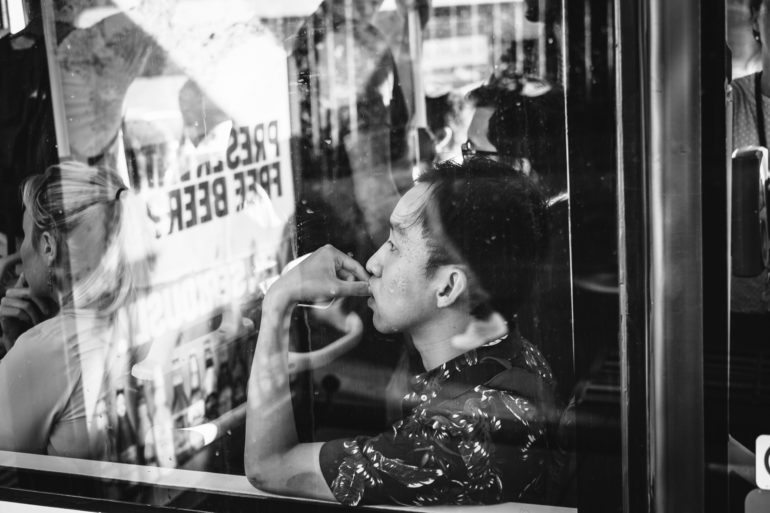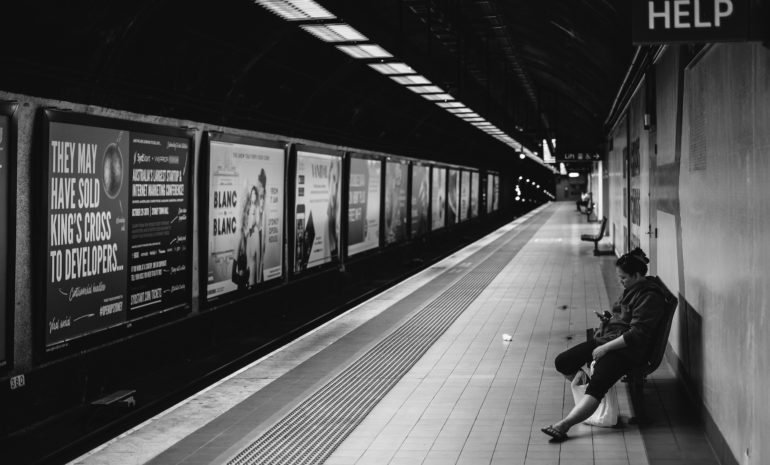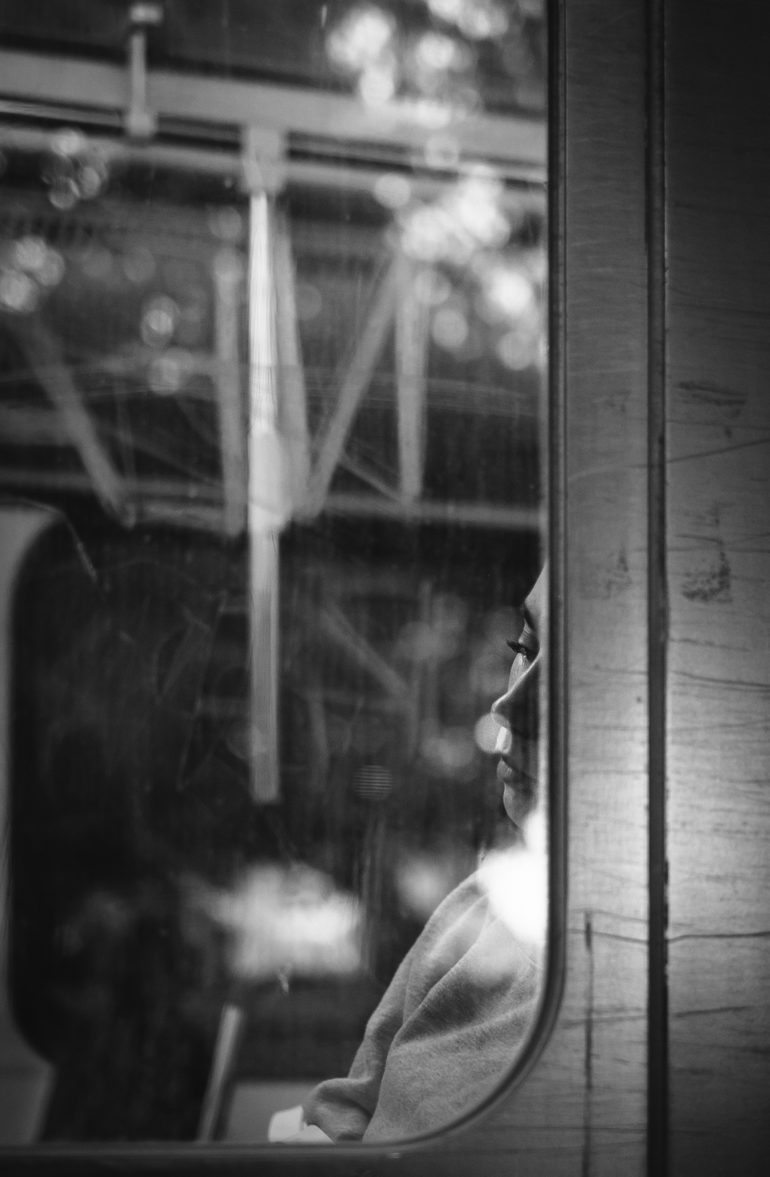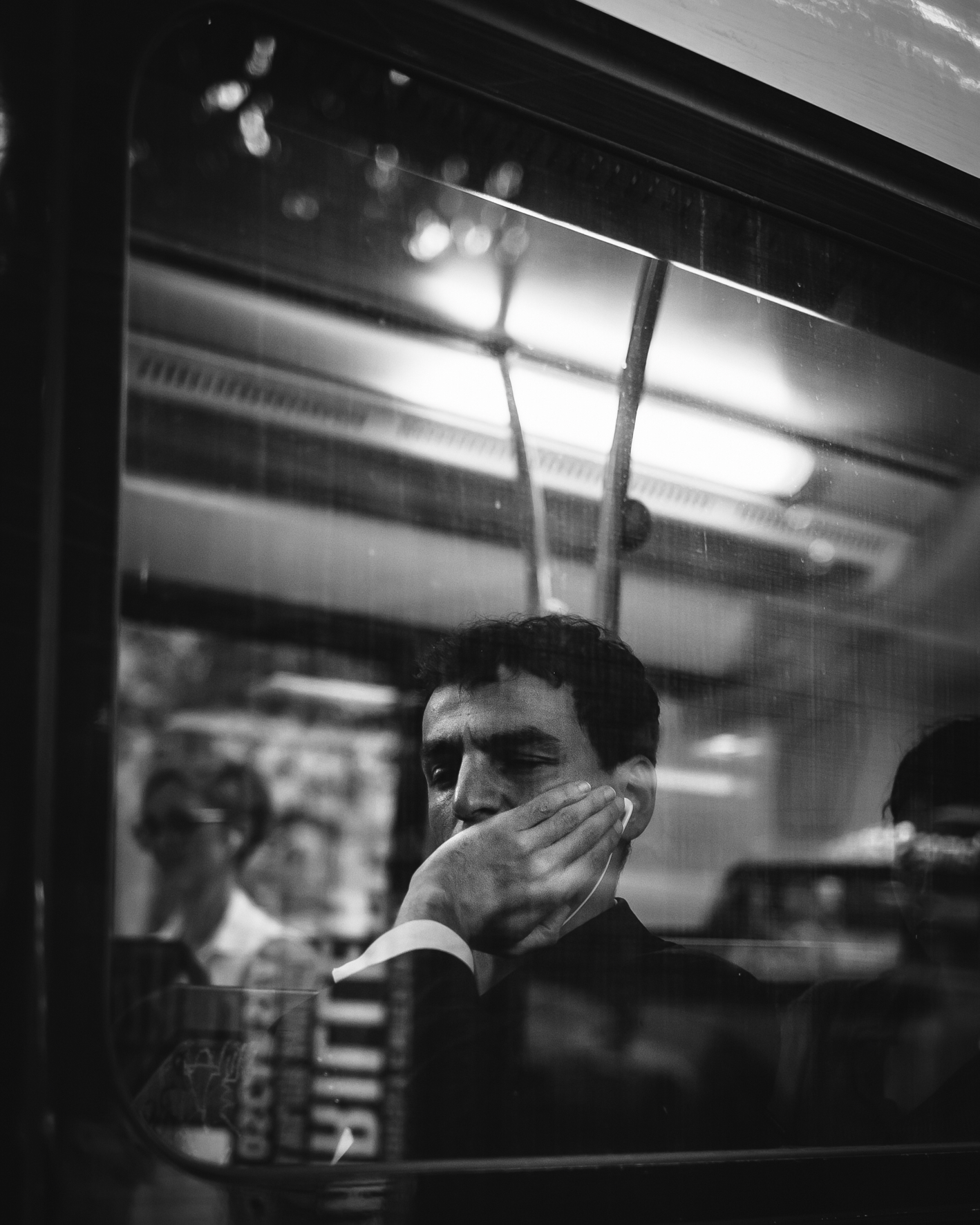All images by Lester Jones. Used with permission.
“The concept comes from exploring the notion that we spend so much of our lives working, why do we do it if even the process of us getting there makes us so vacant and miserable?” says Photographer Lester Jones about his project Their Grind, Not Mine. “For me the message is to observe commuting as an integral part of inner-city life, but to look at the human condition that it generates…”
Street photography came as a natural evolution of his street portraiture work over the years and has allowed Lester to concentrate on more of a personal type of documentation. Indeed, when thought about in the context of the work itself, Their Grind, Not Mind is rather thought provoking. Currently a work in progress, the project uses black and white to uses black and white to make the viewer absorb the series without distractions.
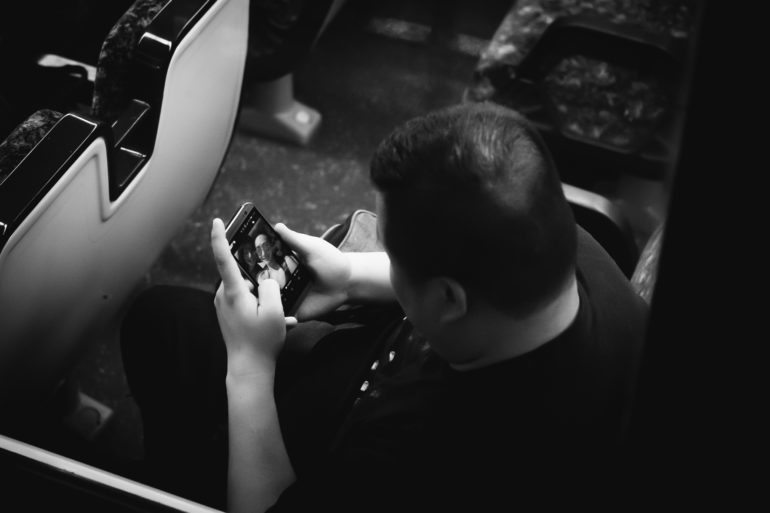
Phoblographer: What made you want to get into street photography?
Lester: It’s something I have been exploring for years and the notion of capturing a moment or mood is something that has always appealed to me. The inspiration for this style of shooting wasn’t actually street work as such, but the early work of Linda McCartney which I first saw in a book while I was at art school in the UK.
The book documented her work in the recording studio and on the road with bands in the 60s and 70s and beyond the amazing subject matters she was shooting, I loved the notion of capturing a sense of mood and preserving moments in time.
My transition into street shooting became something that evolved over time. For years I have had a passion for shooting raw, observational street content, but this is my first focused street photography project with a specific context/theme.
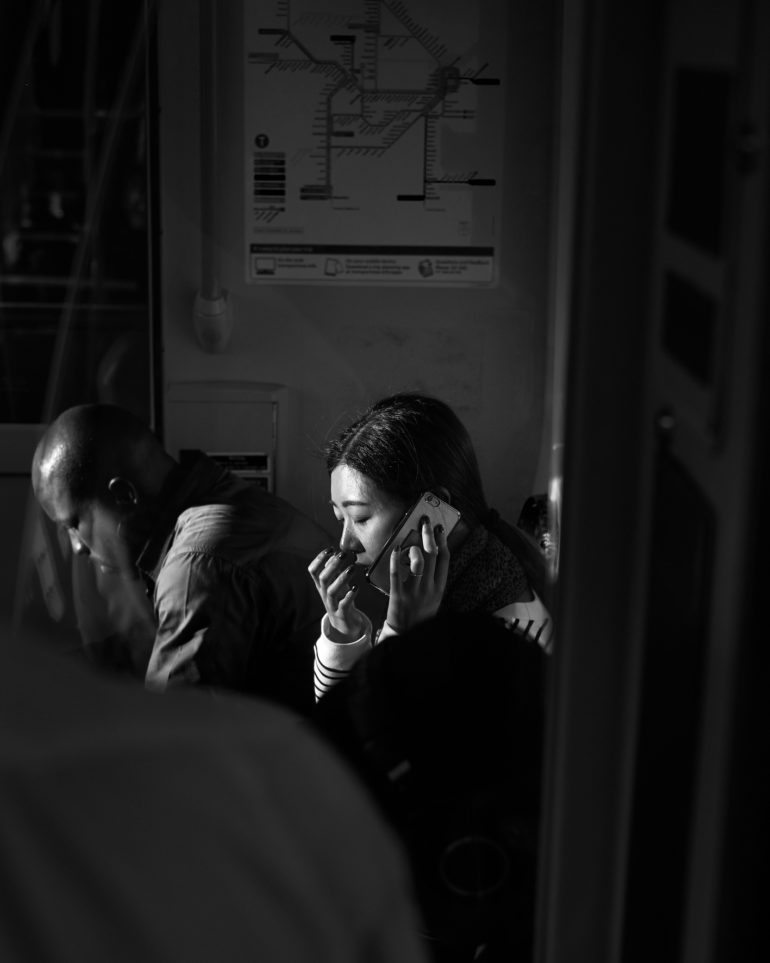
Phoblographer: Tell us about the idea behind “Their Grind Not Mine.” What made you want to do this project?
Lester: The concept comes from exploring the notion that we spend so much of our lives working, why do we do it if even the process of us getting there makes us so vacant and miserable?
After many years of working long hours as a TV Exec, Producer, Director and Writer in the UK and Australia, I found myself in a job that lost it’s appeal.
The commute to and from work each day became something steeped in misery and despair, which helped inspire me to follow my passion and commit to a career change, which led to me becoming a full time Photographer/Director and Content Maker.
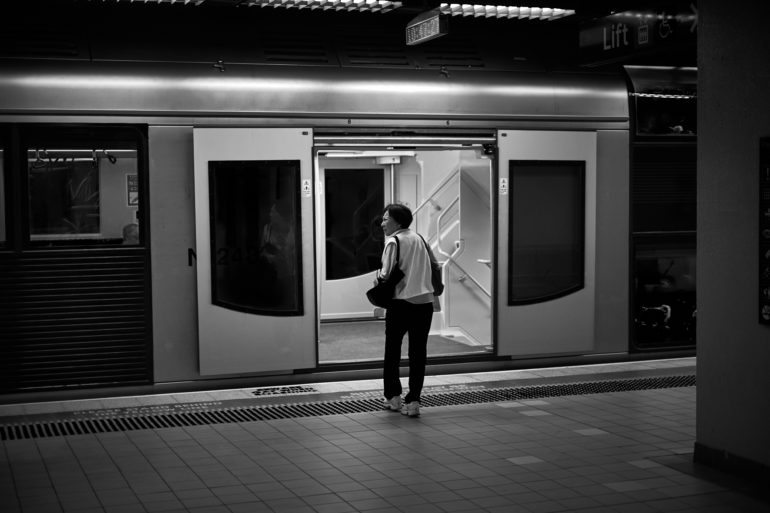
Now working commercially with brands and publications around the world, the notion of commuting is something I observe from the outside, with it raising the common question of why we choose to commit such a large portion of our lives doing something that seemingly makes us so visibly unhappy. Every day I feel lucky that I have had the chance to step away from the ritual of commuting, and as I observe the looks, moods and emotions of others I feel grateful that commuting is; Their Grind, Not Mine.
Phoblographer: How do you think your project differs from all the other photo projects out there about commuters?
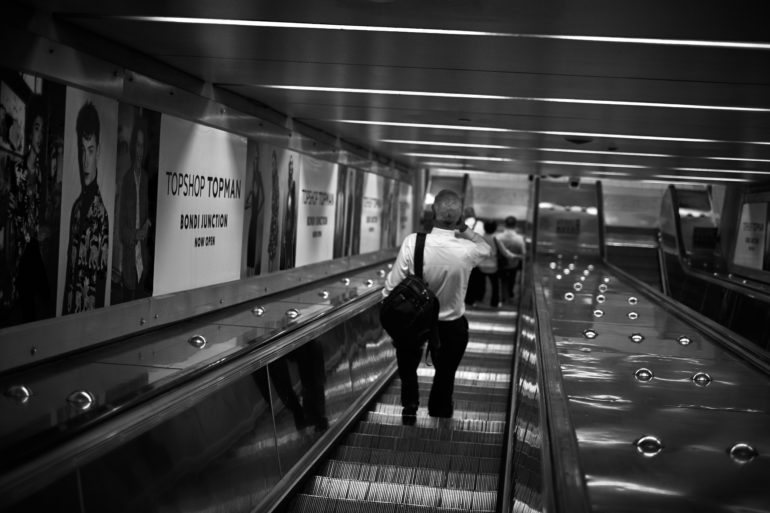
Lester: This project comes from a personally motivated please, a place that I hope inspires others to think.
For me the message is to observe commuting as an integral part of inner-city life, but to look at the human condition that it generates. I don’t know how it compares to other projects, but for me I hope this body of work makes us think about our role in the rat race, and on the flipside, a chance to reflect about what being a part of the rat race does for us.
Phoblographer: Why the creative decision to use black and white here?
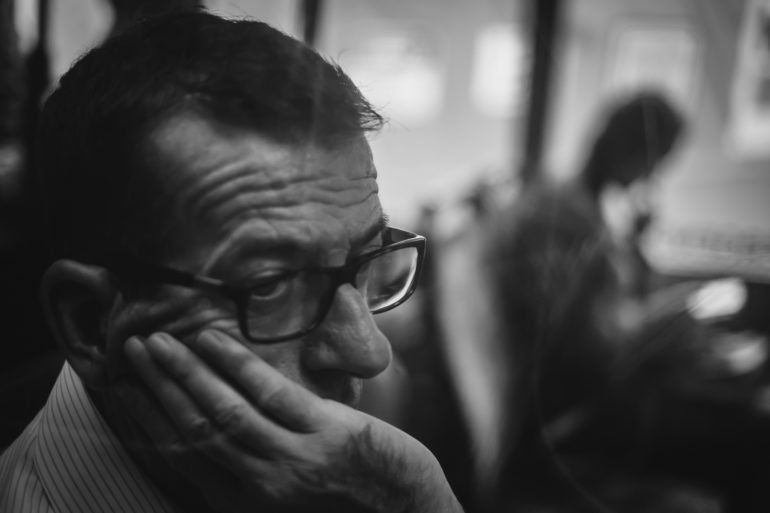
Lester: I have always loved b&w, it’s something I explore as much as possible, even within my commercial work, and I feel for this project it offers a timeless, stark and bold tone that allows you to absorb the message of each image without any distractions.
Phoblographer: This is a work in progress, so what are your plans for the series?
Lester: To travel and expand. In addition to shooting in a increasing variety of locations, I will also be looking to cover different sub-sections of the type of people that ‘commute’.
Phoblographer: Who are these people in the images? More specifically, what attracted you to them and to want to take their photographs?
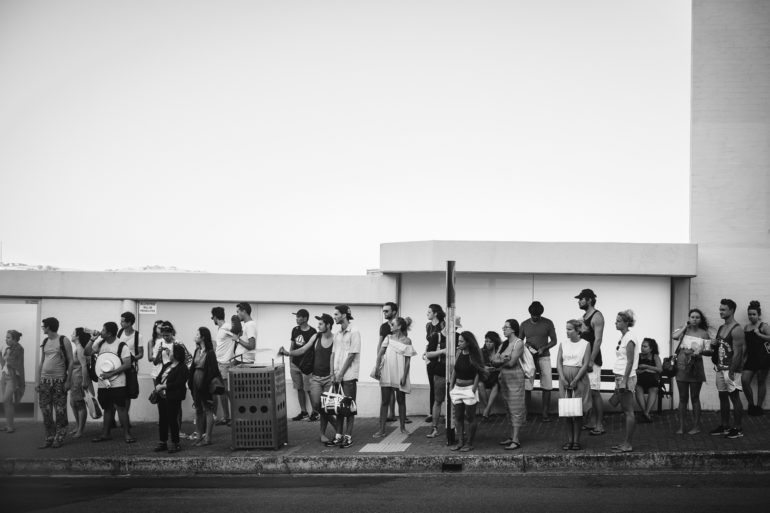
Lester: Quite simply, the subjects are those who catch my eye displaying a mood, feeling or reaction that looks to be related to their commuting experience.
Phoblographer: What do you think projects like this do for the art world?
Lester: I can’t speak on behalf of other projects or for the art world itself, but all I can say is that I hope this project takes an internationally recognisable component of inner city living and transforms it into something that we think about in a different way.
